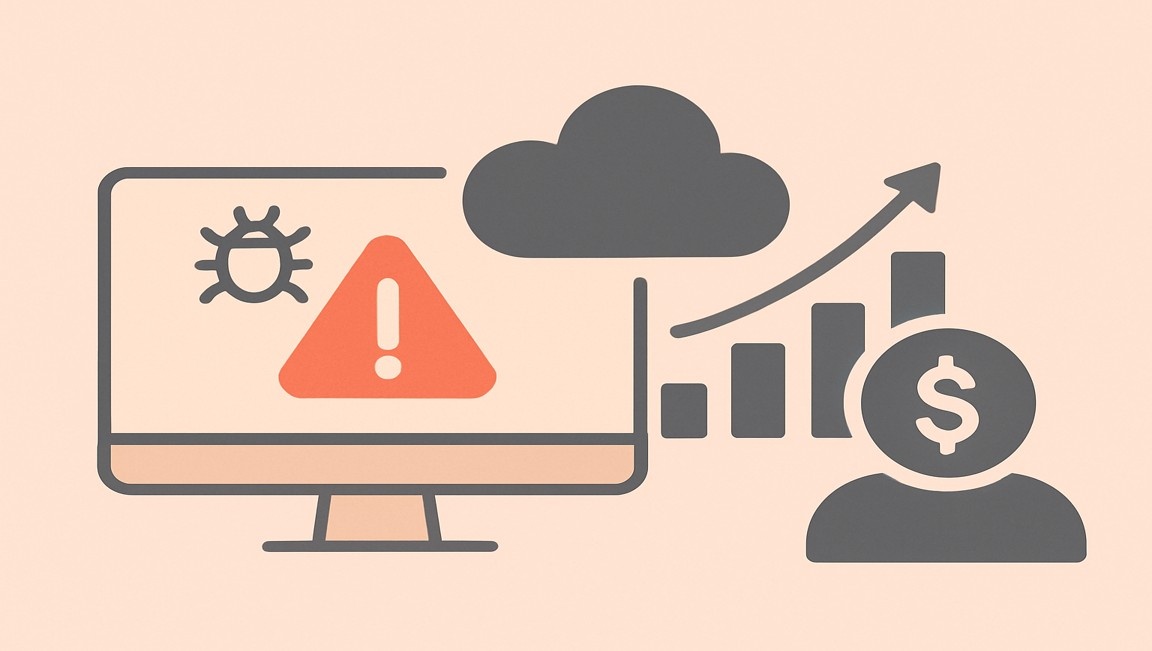Table of content
SHARE THIS ARTICLE
Is this blog hitting the mark?
Contact Us
Software development is not only about making sure that the end product functions well, but the way it looks and feels is what makes the user keep coming back to it.This first interaction makes customers subconsciously decide on business credibility. It’s obvious.
However good a software may be, the way how it looks and feels sends a user the message of how seriously the company takes its own product. Only then it can add value to others. Right?No one likes to keep using software or product that does not look or feel good. It’s basic human nature.
According to a report by Hubspot, 88% of the consumers choose not to revisit the website or application with a not so great UX. Additionally, 90% of consumers reported that they stopped using an app because of poor performance.
So, now you understand how visual elements play a crucial role in enhancing user-experience.
These elements need to be tested well by the QA experts. It’s very important to conduct thorough quality tests otherwise there would be a customer-churn and even a good product can stray away from a successful path to success.
Also Read: Best Practices for Streamlined Quality Testing to Reduce Churn Rate
This blog explores everything about visual testing and its importance in software testing and so much more. Let’s start.
Table of Content
- What is Visual Testing?
- 5 Reasons Why Visual Testing is Important in Enhancing Software Quality
- QAble Utilizes Effective Tools to Implement Efficient Visual Testing
- FAQs
What is Visual Testing?
Software companies come up with new releases or updates for their software product or services every now and then. Regular deployment means changed or updated code bases.
This can cause several problems as even the slightest change, if not done correctly can hamper user experience. Visual testing corresponds to software testing methods that focuses of the visual elements of the software or product usage experience leveraging UI/UX testing.
Let’s see what the task of visual testing comprises.
- Comparison- The process involves capturing screenshots of UI in different states before and after code changes for comparison.
- Accuracy- It requires a high accuracy level to detect the slightest visual differences which may affect user experience.
- Validating Responsiveness- Visual testing is implemented to validate how the UI adapts to different screen resolutions, sizes, and orientations.
- Accessibility Testing- It includes regular checks for compliance with accessibility guidelines for users with disabilities.
- Cross-Devices and Browser Testing- It ensures that UI consistently renders with different operating systems, web browsers, and devices.
Also Read: QA Testing for Tech Startups: Challenges and Solutions
5 Reasons Why Visual Testing is Important in Enhancing Software Quality
Here are the five main reasons why visual testing plays a significant role in enhancing software quality.

Finding Bugs Affecting Visual Effects
Visual testing allows you to detect several UI issues which is not possible through traditional testing approaches. As a result, QA experts and developers can work together to ensure an error-free user interface.
- Visual Consistency- It validates that every UI element functions and appears consistent across different operating systems, devices, and resolutions.
- Pixel Perfection- Visual testing ensures that buttons, icons, and images comprise perfect pixel accuracy matching the design specifications.
- Color and Contrast- Detecting color accuracy, contrast between backgrounds, and inconsistent color schemes is the main task of visual testing.
- Element Alignment- Identify errors and problems regarding misalignment causing the software to appear unprofessional and unappealing.
- Layout Issues- Overlapping elements, improper margins, and incorrect spacing are detected through visual testing.
Also Read: Why Are Extensive Test Coverage Techniques Necessary in QA?
Validating User Experience
Visual testing allows your QA testers to verify if the software provides efficient and pleasing interaction for users.
- Branding and Aesthetics- Following brand and aesthetic guidelines is essential by aligning visual elements reflecting brand identity.
- Interactive Elements- Check the behavior and responsiveness of interactive elements such as dropdowns, buttons, and links, so that they work perfectly.
- Efficient Customization- Examine the application’s ability to customize crucial elements including color themes, font sizes, etc. to cater to individual user preferences.
- Intuitive Navigation- It verifies that application’s user flow and navigation is intuitive and interactive complimenting the features without confusion.
- Consistent Design- The visual design and the UI elements must be verified well. The balance between the two helps is what makes the user experience great.
Enhancing Brand Integrity
Visual testing helps in making the user experience great and memorable. This can help in customer retention, reducing customer churn, and to be the front runner in a competitive market.
- Brand Reputation- Visual testing results in a polished user interface which helps create a positive brand reputation and promotes trust.
- Visual Storytelling- It validates the application’s visual elements and reinforces the brand narrative with strong storytelling and messaging to establish an emotional connection.
- Localization- Visual testing validates that software adapts to regional and language requirements for localization.
- Design Guidelines- It helps in detecting that UI follows the brand’s design guidelines and standards to maintain a professional appearance.
- Brand Color Consistency- The application must comprise consistent primary and secondary colors across the UI to promote brand association and recognition.
Focus on Customer Satisfaction
Visual testing largely focuses on customer satisfaction to deliver user-friendly and functional software.
- Faster Bug Resolution- Automation testing of visual elements enables faster detection of visual defects reducing the time to identify glitches, bugs, and errors.
- Error-Free Interface- Promptly fixes significant visual defects and reduces the chances of encountering them while using the application.
- Intuitive User Experience-Visual testing verifies that every aspect and feature is designed in a user-friendly manner reducing user frustration.
- Increased User Engagement- Well-functioning UI promotes increased user engagement leading to a higher retention rate and customer satisfaction.
- Enhanced Interaction- Addressing visual defects enables a smoother and more enjoyable experience for users.
Reduced Manual Efforts with Automated Testing
Automated testing can be very beneficial while visual testing. It helps in enhancing the overall efficiency, reduces human errors, and thus ensures high quality software delivery.
- Increased Productivity- Reduced manual testing efforts for visual testing lead to improved tester productivity and allows the QA experts to focus on essential tasks.
- Real-Time Reporting- Visual testing tools provide detailed reports about every defect which facilitates quick bug tracking and resolution.
- Efficient Maintenance- Automated testing is also easy to maintain and update any changes much faster.
- Scalability- Effortless scalability with automated testing with growing complexity is no more a hassle. Thus, you can maintain testing efficiency at every level.
- Focus on Complex Scenarios- Automated visual testing will reduce repetitive tasks which allows you to dedicate your time to address and solve complex scenarios.
Also Read: Different Techniques for AI Chatbot Testing
QAble Utilizes Effective Tools to Implement Efficient Visual Testing
QAble Army considers customer satisfaction as our core value. That’s why we always thrive in exceeding client expectations and set a new benchmark in the software testing industry.
Every testing approach requires having the right set of tools. However, as a leading QA testing company and QA Consulting Company in India, QAble always takes care of that as we have the expertise in utilizing significant tools with ease.
Let’s look at some of the tools that you must consider to conduct visual testing.
- Selenium WebDriver- It is a highly popular automation framework that supports visual testing to conduct efficient interactions with web elements.
- Percy- It is a visual testing platform that can integrate easily with your existing testing and CI/CD pipelines. It helps the testing team with functionalities to track and review the UI changes.
- Applitools- Applitools uses AI-powered image comparison algorithms to detect significant visual differences in web and mobile applications.
- Cypress- Cypress is an end-to-end testing framework that comprises plugins for screenshots which is highly beneficial for visual testing.
- TestProject- It is an all-in-one test automation tool comprising various capabilities for testing mobile and web applications.
- Wraith- It is used to perform visual regression testing through screenshot-capturing capabilities of different states for the UI. The screenshots can be compared with each other, thus addressing the issues in the UI if any.
- Puppeteer- It is a Node.js library that provides high-level API to control headless browsers. You can easily capture screenshots for easy comparison for visual testing.
While selecting any visual testing tool you must consider factors such as integration, reporting capabilities, scalability, and compatibility with your project requirements.
Discover More About QA Services
sales@qable.ioDelve deeper into the world of quality assurance (QA) services tailored to your industry needs. Have questions? We're here to listen and provide expert insights


Nishil Patel is the Co-founder of QAble, delivering advanced test automation solutions with a focus on quality and speed. He specializes in modern frameworks like Playwright, Selenium, and Appium, helping teams accelerate testing and ensure flawless application performance.
.svg)














.webp)
.webp)
.png)
.png)











.png)



.png)

.png)

.png)





















.webp)

